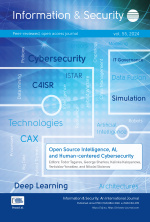Strategic and Technology Policy Implications for E-Government
Source:
Information & Security: An International Journal,Abstract:
The ongoing e-Government Program in Taiwan started in 1997. It is based on the Government Service Network, which is the backbone infrastructure of the network transaction environment. During the first phase of this program in 1998, Taiwan established its first Certification Authority, namely, the Government Certification Authority (GCA), and this launched the electronic certification services in Taiwan. From 2001 to 2004, the Government Public Key Infrastructure (GPKI) has been established according to the planning set forth in the e-Government Program with the aim of strengthening electronic government infrastructure and establishing electronic certification and security applications for executive ad¬ministration. Besides GPKI applications, PKI interoperability has become a major issue in Taiwan recently. Several interoperability schemes, such as strict hierarchy and Bridge Certificate Authority (BCA), have been deployed in different PKI do¬mains. To achieve global PKI interoperability in Taiwan, BCA is being adapted as a major CA-CA interoperability engine, which will ensure trusted relationships be¬tween the different PKI domains.
